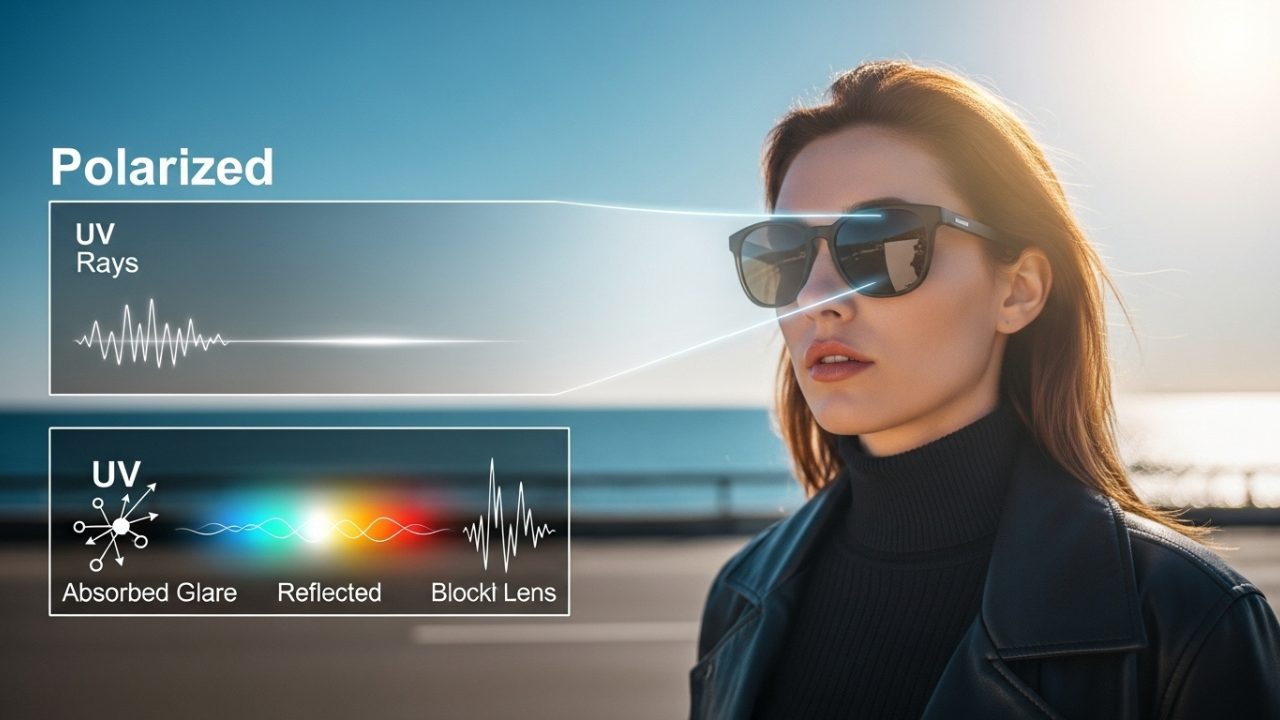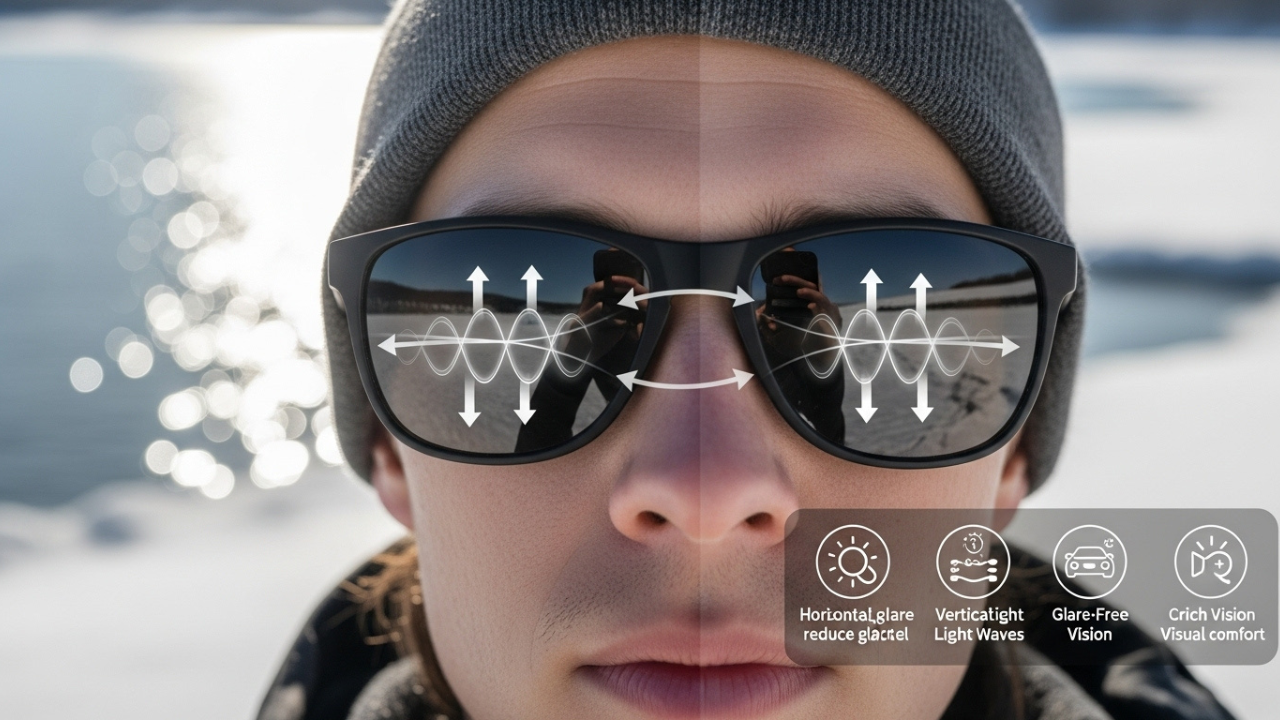If you have ever put a pair of sunglasses on during a sunny day, you can understand how relaxing it is to have bright light blocked. However, have you thought about the science behind how sunglasses block light? There is more to sunglasses than just looking stylish; they block and filter light to minimize strain on our eyes. This article explores the different methods that sunglasses use to block light and the physics involved in eye protection.
You will discover how sunglasses operate, different lens types, and the coloration and tints on the sunglasses that enhance their function beyond simple accessories.
Key Takeaways:
- Sunglasses filter and absorb light through lens to block harmful rays.
- Glare reduction through a polarized lens increases visual comfort and clarity.
- Sunglasses block damaging rays from the sun due to UV protection built in.
- Control of light transmission necessary for eye protection reflects the physics of sunglasses.
How Do Sunglasses Block Light? A Look at the Science
Sunglasses serve to protect our eyes from the negative consequences such as UV radiation. sunglasses block light, it works because every piece of technology has its own scientific logic, in this case its physics and the materials used, plus how the coating works.
What is Light, and How Does it Interact with Sunglasses?
Light can be referred to as electromagnetic radiation which has various forms that include both ultraviolet radiation and infrared light that we cannot see. Sunglasses use specific materials that reflects light, absorbs, and transmits in order enable individuals see while protecting their eyes from superfluous glare. Sunglasses help to limiting light exposure to the eye as well as reducing eye strain. Now, let us look at the processes that assist in achieving this goal.
When light strikes an object, the object can either absorb, transmit, or reflect the light. In this case sunglasses serve the function of limiting the amount of light that is transmitted to your eyes. Now, let’s examine the primary factors that affect this process:
Absorption: The lenses of sunglasses absorb select light wavelengths, thus, reducing the quantity of light let in to your eyes. Most sunglasses are designed to absorb or block most UV radiation since UV light is harmful to the eyes.
Reflection: This is some sunglasses are coated with reflective materials that bounce light away from the lenses. This aids in reducing glare from highly reflective regions like waters and snowy areas.
Transmission: This is the degree in wihch the light can pass through the lens onto the eyes. The more light is absorbed, the dimmer the lens becomes hence, the variation of darkness in the sundry glasses.
The Role of UV Protection in Sunglasses
Arguably, the most crucial task assigned to sunglasses is to serve as eye shields from the sun’s ultraviolet (UV) rays. Though xenon, these rays pose a threat to eye health as they may cause cataracts, macular degeneration and in some cases skin cancer around the eye.
Alongside accompanying risks, most sunglasses of great quality block UV radiation, Irrespective of whether it’s UV-A and UV-B, for about 99-100 percent.
UV-A: These are the longer UV rays that can penetrate deep underneath skin and damage deeper regions of the flesh for a prolonged duration.
UV-B: These shorter but more powerful radiation result in immediate harm and damage to the eyes such as burns occurring to the eye surface called cornea (photokeratitis).
Blocking rays of light will be achieved by the use of special coatings or chemicals embedded in the lenses. Sunglasses can either be dark or clear in color but still offer protection, which is the reason selection of the specific lens type should be strongly considered.
How Polarized Lenses Improve Light Blocking
It’s likely that you have heard of polarized sunglasses and how they can reduce glare, particularly when someone is near water or snow. But, how do polarized lenses actually function, and why do they work to block light more efficiently?
What is Polarization?
Polarization has to do with the direction in which light waves travel. Normally, light is emitted in many directions, but when it meets flat surfaces such as water, roads, or snow, it gets polarized – meaning light waves travel in one direction. This causes serious glare which can be discomforting and affect visibility.
Polarized lenses have a special filter that blocks light waves traveling in certain directions. Such lenses can reduce glare by only allowing vertically aligned light waves to pass through. This improves visual clarity when outdoors in the sun, as polarized lenses tend to enhance clarity quite drastically.
-
Glare reduction: When polarized lenses filter horizontal light waves, the excessive glare that radiates from surfaces such as water, glass, and wet roads is reduced.
-
Improved comfort: The relief of glare makes vision clear and lessens eye strain, which is greatly beneficial in activities like driving, fishing or skiing.
Lens Color and Coatings: How They Affect Light Blocking
Most people do not understand why there is a variety of lens color options for sunglasses. The fact is that these colors serve and important purpose in determining how light interacts with the lenses too.
Common Lens Colors and Their Benefits
Different activities require different lenses since they filter different types of light. Below a highlighted variety is provided alongside their benefits:
-
Gray lenses: For purposes where the customer requires a device that will help in enabling them to perceive colors, undertones of gray will be helpful, This is due to their ability to reduce glare and maintain balance when it comes to perception. This greatly enhances their use when it comes to general purposes in the relenting scorching sunlight.
-
Yellow or amber lenses: Perform well when it comes to difficult lighting situations like foggy days. This is thanks to their ability to guarantee depth perception, which greatly assists in helping people see things that are not as easily distinguishable as they ought to. So fog is eliminated.
-
Brown lenses: Are great due to their ability to sharpen perception whereby even blue light can be blocked. This makes them very ideal when going out in the great sun while hiking or even strolling in the cars.
-
Blue lenses: This lenses with non versatile purpose. Their main role is restricting energy from impact on reflective surfaces which also results in them being popularly used for water sports, surfing and other outdoor activities.
-
Mirrored coatings: Reflective lenses possess a mirror-like coating on the external part of the lenses, which also diminishes the amount of light that enters the eyes. These lenses are used in very bright conditions, such as skiing and snowboarding.
Special Coatings for Enhanced Light Blocking
Sunglasses also come with lens tints that aid in blocking light and other special coatings. These are some of the more popular coatings:
-
Anti-reflective coatings: These are useful in reducing reflection on the lens surfaces. Glare can be annoying when it is coming both from the external environment and the internal surface of the lenses. Anti-reflective coatings help drivers at night or any dimly lit places.
-
Blue light filters: Some sunglasses come coated with filters that inhibit eye-straining blue light, particularly harmful to eyes which comes from prolonged use of screens.
How Sunglasses Protect Your Eyes: The Bigger Picture
A bigger picture view of the protective nature of sunglasses is that they are not merely for fashion. The following subtopics illustrate some of the clear benefits of wearing sunglasses:
Preventing Eye Diseases and Damage
UV radiation, as tunning and harmful as it may seem, is not a great friend in the long run. Chronic exposure to the sun can result in cataracts, degeneration of the macula or retina, and pterygium, a growth on the eye’s cornea. The sensitive skin around the eyes to protects us from skin cancer as well. The need to shield and block harmful rays makes it necessary to use shades.
Reducing Eye Strain and Fatigue
When spending time outdoors, especially when it’s bright, not wearing sun glasses necessitates eye exertion due to the need to filter excess light. This excess light can potentially lead or contribute to eye strain and fatigue which subsequently results in headaches and general uneasiness. Lifted lenses serve to reduce the level of light that reaches your eyes which in effect gives your eyes a rest, making vision clearer and more ascertainable. Sunglases equipped with Polarized lenses reduce glare even further, eliminating the need to squint which slows down vision and strains your eye.
Improving Visual Comfort in Bright Conditions
When climbing mountains or going for a swim at the beach, driving on the road during the day, the sun is usually active, which may interfere with visual comfort. Sunglasses aid with comfort in all these activities as they aid in glare reduction and controlling light coming to the eyes. This is of high emphasis when with tasks that require a high level of concentration and focus.
My Opinion| The Physics of Sunglasses and Their Role in Light Protection
Sunglasses are more than mere accessories—as protective ophthalmic devices, they safeguard against intense visible glare and internal eye strain that can arise from environmental conditions such as sunlight reflection or glare, which greatly enhances the clarity of vision. Moreover, striated filters attached to polyamide lenses perform an electronic division, keeping light absorption within specific boundary parameters for improved image perception. Sunglasses have become an indispensable item on the ever-growing consumerism. This great importance stems not only from the ever-shifting fashion trends, but also from the outlined necessity to protect the eyes of the individuals who continuously eye the screens of modern gadgets.
Wielding shades shields the periorbital skin and protects the sensitive area around the eyeball. However, whether protecting the eyes from harm or trying to reduce distraction in the peripheral visual field, eye-tracking studies can assist in the understanding of the science and physics of sunglasses that make them a fundamental accessory. Hence, the enjoyment of sunlight, as well as the unquestioned enjoyment of external conditions, alongside astonishing summer temperatures, can prompt the natural desire to put on sunglasses.






























Leave a Reply
View Comments